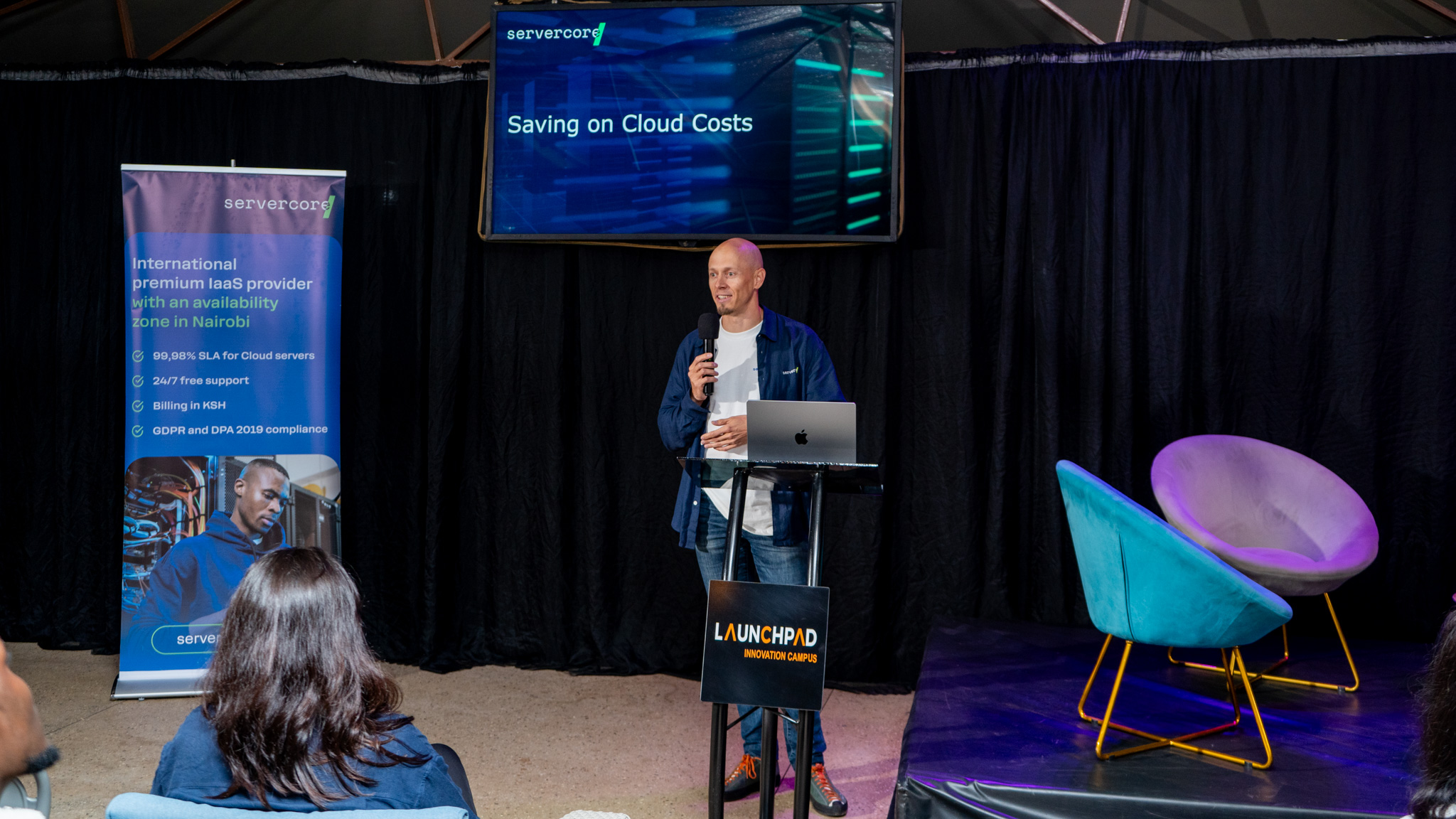
The meetup started with an engaging presentation by Ivan Romanko, Servercore’s Chief Technology Officer (CTO). Ivan shared a wealth of insights and introduced attendees to cutting-edge strategies, tools, and methodologies for reducing cloud costs.
Ivan shared and demonstrated how businesses can significantly trim their cloud expenses by leveraging the following strategies.
Frozen Instances
Frozen instances are a cost-saving feature offered by some cloud providers that allows users to significantly reduce costs for virtual machines (VMs) that are not in active use but still need to be retained. To do so, companies need cloud monitoring tools to help identify underutilized instances that could be candidates for freezing.
Frozen instances are ideal for development and testing environments, seasonal workloads and project-based workloads.

Shared Cores
‘Using shared cores on cloud platforms is another effective strategy for reducing cloud costs’, Ivan continued. Shared cores are typically priced lower than dedicated cores, as you’re not paying for exclusive CPU use.
By strategically using shared cores for appropriate workloads, organizations can significantly reduce their cloud computing costs while still maintaining the ability to handle performance spikes when needed. Microservices, web servers, dev environments, and small databases are ideal use cases.
Kubernetes (K8s) Autoscaler
The Kubernetes (K8s) auto scaler is also a powerful tool that can significantly help businesses reduce their cloud costs. It automatically adjusts the number of nodes in a cluster based on resource utilization.
As such, it scales resources up or down based on actual demand.
By effectively leveraging K8s auto scaler, organizations can balance performance and cost, ensuring they only pay for the needed and utilized resources. This can lead to substantial savings in cloud costs, especially for applications with variable load patterns like web applications.
Bare Metal Instances
‘In certain scenarios, bare metal instances can be an effective way for businesses to reduce cloud costs’, Ivan went on.
Bare metal instances are physical servers dedicated to a single tenant, offering direct access to the hardware without the virtualization layer. Direct access to hardware resources can improve performance for certain workloads. Better performance can mean the need for fewer instances, potentially reducing overall costs.
Some use cases where bare metal can be cost-effective include high-performance computing, gaming servers, big data analytics, media processing and rendering, databases with high I/O requirements and legacy applications that don’t perform well in virtualized environments.

The Panel Discussion
As the event continued, a dynamic panel presentation featuring industry experts Caine Wanjau, the Co-Founder and CEO of DigiTax, Daisy Isiaho, the Co-Founder and CPO of Zuri Health, Ivan Romanko, and Victoria Kleinbort from Servecore, followed.
The speakers shared their experiences and insights on the challenges businesses face in cloud management and offered strategic tactics for optimizing cloud expenses.
Caine Wanjau highlighted three critical issues: cloud planning complexities, security vulnerabilities and internal misuse of resources.
Cloud insecurity remains a significant concern,” Wanjau explained. “Hackers constantly probe for weaknesses in cloud security measures, potentially leading to significant costs for companies.” He also noted the often-overlooked issue of internal misuse, where employees might utilize company cloud resources for personal projects.
Daisy Isiaho added, “As businesses grow, they grapple with increasing compute resource demands and complex migration issues.”
When discussing solutions, the panelists emphasized key strategies for business owners and managers, including:
The critical need to have a deep understanding of business systems and infrastructure, proactive capacity planning and regular service audits, deliberate assessment of peak requirements, engagement with cloud consultancy experts for optimization analysis and open communication with cloud providers about specific business needs
“Proper planning is crucial in minimizing downtimes,” the panel agreed.
Daisy Isiaho stressed the importance of regulatory compliance, especially in sensitive sectors like health. “Failing to adhere to regulatory requirements can halt business operations and incur significant costs,” she warned. She advised businesses to thoroughly investigate and address data privacy concerns and regulatory requirements specific to their industry.
“Not adhering to a regulatory requirement can stop and even cost your business.”